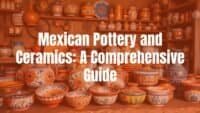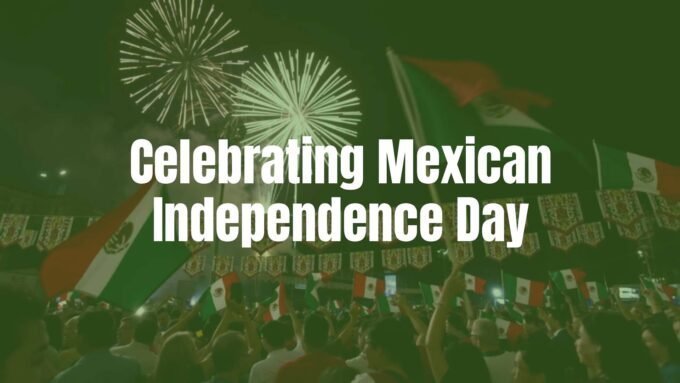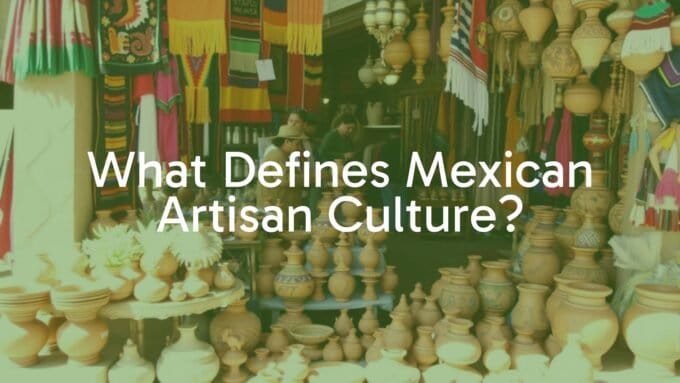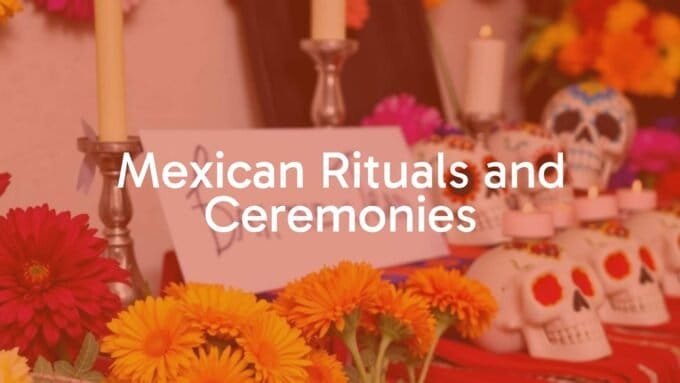What is Mexican textile art?
Mexican textile art is much more than cloth. It is a bright, detailed record of many centuries of history, culture, and creativity. It carries the spirit of Mexico and shows the many identities of its ancient peoples and today’s indigenous communities. From fibers spun before 1400 BCE to designs on modern runways, these textiles tell stories, keep traditions alive, and show who people are, much like a spoken language. Every thread, pattern, and color choice adds to a living art form that keeps growing and changing, making Mexican textile art a rare and important part of global textile work.
At its core, Mexican textile art is a strong expression of local life and art, showing how heritage survives in a global age. These pieces are not just decorations. They are records of history, signs of identity, and often, personal and community stories. This art is tied to daily life, ceremony, and social ties, serving both practical and symbolic roles. The craft lifts everyday objects into items with deep cultural meaning.
What defines Mexican textile art?
Mexican textile art stands out for its wide variety, deep roots, and the meanings woven into each piece. It blends indigenous techniques and materials with later European additions, leading to a clear and unique look. Natural fibers such as yucca, palm, maguey, and cotton combine with introduced wool and silk. Tools range from the ancient backstrap loom to the European foot pedal loom, each giving different textures and styles.
Equally defining are the “hidden messages” in the cloth. Patterns and colors are chosen with care to show identity, record daily life, and share beliefs. Geometric figures, animal shapes, and Christian images carry meanings linked to the place and people who made them. This rich language, along with careful handwork, turns simple fabric into cultural objects that carry history and meaning.

Which regions are known for Mexican textile art?
Textile art thrives across Mexico, with the central and southern regions especially rich due to many indigenous communities. States like Oaxaca, Chiapas, Mexico State, Puebla, Michoacán, Hidalgo, and Tlaxcala are well known for their craft traditions.
| Region/State | Known for |
|---|---|
| Oaxaca | Rugs from Teotitlán del Valle; huipils; rebozos; wide use of natural dyes |
| Chiapas | Tzotzil and Tzeltal backstrap weaving; richly embroidered huipils |
| Mexico State | Tenancingo rebozos; Otomi knotted rugs |
| Puebla | Indigenous embroidery and weaving cooperatives |
| Michoacán | Purepecha embroidery that tells stories of daily life |
| Hidalgo | Tenango embroidery with colorful animals and plants |
| Tlaxcala | Wool rug weaving with long local history |
Wherever indigenous communities are strong, you will find lively textile traditions that carry local stories.
Historical roots and cultural significance of Mexican textile art
Mexican textiles reach back at least to 1400 BCE. The story is one of change, blending, and cultural meaning that shaped many peoples. From early plant fibers to later mixed techniques, textiles have long been part of Mexican life.
This heritage is about more than looks. It relates to survival, identity, and storytelling. Textiles act as a visual language, mark group differences, and pass down history and custom. They connect people to their past and show the skill and spirit of makers across centuries.
Indigenous origins and pre-Hispanic influences
Before the Spanish arrived, textile making was already advanced in Mesoamerica and tied to social, economic, and spiritual life. The oldest cloth pieces, found in the north, date to 1800-1400 BCE. Makers used fibers close at hand: yucca, palm, and maguey in dry areas; cotton in hot coastal zones. The Aztecs did not have cotton at first; after conquering cotton lands, they demanded it as tribute. Cotton was so prized that only the elite could wear it, and cotton cloth even served as money.
Weaving was sacred. Each settled culture had a weaving deity. Women played a leading role and were often buried with the pieces they made. Women’s dress included enredos (wraps), fajas (belts), huipils (tunics), and quechquemitl (short ponchos). These were functional but also full of meaning, showing ideas about the universe, social rank, and group identity. Hernán Cortés praised Aztec weaving in letters to the Spanish king, noting the high level of skill.
Spanish colonization and hybridization of techniques
The Spanish conquest changed clothing and production sharply. Many pre-Hispanic dress styles were banned. The Spanish brought silk, wool, and the foot treadle loom by the late 1530s. At first, fabrics came from Spain, but sheep and silkworms soon arrived, making local production possible.
By 1580, Mexico was a major producer of wool and silk cloth, especially in Oaxaca, Tlaxcala, and Puebla. Spanish weavers set up workshops and hired indigenous artisans, who later took the lead due to lower costs and strong skills. Production grew enough to supply Mexico and exports to Spain, the Philippines, Central America, and Peru. This period mixed local artistry with European tools and materials, creating new looks that still shape Mexican textiles. The rebozo, a widely used shawl, appeared then as a blend of indigenous, Spanish, and Asian influences.

Symbolism in Mexican textiles: meaning of motifs and colors
Mexican textiles use a visual code where patterns and colors carry meaning. Designs can show identity, beliefs, and history. Common elements include:
- Geometric shapes: zigzags, spirals, stepped frets, crosses, moons
- Animals: squirrels, rabbits, deer, armadillos, doves, hummingbirds, pelicans, fish
- Human figures: dancers, community scenes
- Christian symbols after the Conquest: crosses, virgins, saints, angels
Dyes also speak. Natural dyes like cochineal give reds and purples, and indigo gives blues. Colors often link to local meanings and long-held customs. Many regions have signature motifs, such as zoomorphic belts by the Mazahua or big plumed birds in Santo Tomás Jalieza.
Role of textiles in Mexican festivals, community, and daily life
Textiles are part of daily life, social ties, and ceremonies. In many indigenous areas, women handle clothing for their families and community, starting with fiber harvesting, then spinning, dyeing, and weaving. This long process shows the value of each piece.
Clothing marks identity. Huipils, sarapes, and rebozos signal who you are and where you come from. During celebrations like the Fiesta de las Velas in Oaxaca, women wear their finest handmade dresses, often worth thousands of dollars, showing skill and pride. Embroidery can tell stories of work, events, and local plants and animals, as seen in Tzintzuntzan, Michoacán. Rebozos carry children and goods, while other items serve in rituals or decorate homes. Textiles touch nearly every part of life and keep tradition and community ties strong.
What are the main types and techniques of Mexican textile art?
Mexican textile work includes many types and methods, each with its own history and style. Pieces speak through their look and through how they are made. The backstrap loom’s steady rhythm and the needle’s fine stitches pass from one generation to the next, keeping culture alive.
Fiber choice, weave structure, embroidery style, and dyes all shape a piece. The mix of material, skill, and design creates the wide range of textiles seen today.
Weaving methods and loom varieties
Weaving is central to Mexican textile art and uses two main looms: the backstrap loom from pre-Hispanic times and the foot pedal loom brought by Europeans. The backstrap loom, used mostly by women in the south, may look simple but can produce complex patterns by switching thread colors and adding elements like shells. It is used for kitchen cloths, tablecloths, carrying bags, and huipils, with designs woven into the fabric itself.
The foot pedal loom, often used by men and more common in central and northern areas, makes wider pieces. It is key for sarapes, rugs, and blankets, often in wool. Its arrival in colonial times expanded production and added new looks and sizes. Both looms remain important and give different strengths to Mexican textiles.
Embroidery styles: regional differences
Embroidery is one of the most striking parts of indigenous textiles, and styles vary widely by region. Needle and thread create designs that can be geometric, celestial, floral, animal, or human. The meaning and look change from town to town, making each piece a window into local life.
In Oaxaca and Michoacán, loose dresses called huipils and guanengos can be filled with straight stitching, cross-stitch, and tucks, with bright floral and geometric patterns. Mazahua belts often show animals. The Tacuates of Santiago Zacatepec embroider small creatures like centipedes and scorpions on napkin borders. Otomi makers include moon shapes, and the Tarahumara favor triangles on belts. Christian symbols also appear, mixed with native designs. Embroidery both beautifies clothing and shares group identity and daily stories.
Natural dyeing practices and materials
Many traditional Mexican textiles use natural dyes that give rich, earthy colors. This knowledge comes from pre-Hispanic times and uses insects, flowers, seeds, and plants found nearby. Artisans carefully gather and prepare these materials to create many shades.
Cochineal, from a small insect, is famous and can make deep purple, bright red, and even yellow with added elements like lime juice or certain flowers. Indigo gives blues. Plants like muicle add purple-blue tones. Cheaper synthetic dyes once pushed out natural dyes, but there has been a clear revival because of interest in authenticity, care for the environment, and the special look that natural dyes provide. Keeping these methods alive ties the art to the land.
Felting, appliqué, and other decorative methods
Beyond weaving and embroidery, makers use other methods to add texture and detail. Felting, though less common, mats wool fibers to make thick, non-woven fabric. Appliqué adds cut fabric pieces onto a base to form designs with contrasting textures and colors.
Brocade weaving creates raised patterns right in the cloth. Some weavers also add shells and other natural items into their work. These techniques, used alone or together, show the wide skill and creativity of Mexican artisans.
Regional specializations: key traditions in Mexican textile art
Mexico’s many cultures appear clearly in its textiles. Each region has its own strengths shaped by local history, materials, and taste. These differences are more than style; they mark identity, link to ancestors, and show pride in craft.
From dry northern lands to the green south, textiles across Mexico reflect both indigenous roots and colonial history. Each thread, dye, and pattern carries a piece of that story.
Oaxaca textiles: colors, patterns, and meaning
Oaxaca is famous for textiles with great variety, strong colors, and meaningful patterns. The state offers rugs, huipils, rebozos, tablecloths, and more, made on both backstrap and foot pedal looms.
Teotitlán del Valle rugs often use natural dyes, especially cochineal, which has been used since pre-Hispanic times for purples, reds, and yellows. Designs draw on pre-Hispanic ideas, geometric shapes, and local plants and animals. These patterns carry deep meanings tied to Zapotec thought and community identity. Oaxaca’s long tradition and skill make its textiles some of the most loved in Mexico.
Huipiles of Chiapas, Yucatán, and Guerrero
The huipil, a loose tunic, is one of Mexico’s most iconic garments, with versions that reflect the cultures of Chiapas, Yucatán, and Guerrero. These shirts are wearable art built on long traditions.
In Chiapas, Tzotzil and Tzeltal women weave on backstrap looms and add rich embroidery. Designs include geometric shapes, animals, and symbols of the universe, and can show the wearer’s group and status. In Yucatán, lighter cotton and linen suit the heat, with fine floral embroidery. In Guerrero, Amusgo weavers in Xochistlahuaca are known for brocade and the use of naturally colored cotton, including brown coyochi. Master weaver Florentina López de Jesús worked to keep these methods alive. Each huipil shows the maker’s skill, patience, and pride.
Sarapes and rebozos: iconic garments
The sarape and rebozo are two classic Mexican pieces that moved from daily use to national symbols. The sarape, a poncho-like garment with strong colors and geometric designs, is worn by men. Sarapes from Saltillo, Coahuila, are famous for bright colors and diamond or concentric patterns. The garment has pre-Hispanic roots, with its current form shaped over time.
The rebozo, a long shawl with fringes, holds a special place for women. It began in colonial times as a mix of indigenous mámatl, the Spanish mantilla, and Asian repacejo. It warms the body and helps carry children or goods. Many rebozos have woven patterns or tie-dyed jaspe designs. Tenancingo in Mexico State is noted for cotton or wool rebozos and fine knotting. Master weaver Evaristo Borboa is known for ikat work and his efforts to keep older styles alive. Both garments show Mexican craft and identity.

Michoacán’s Purepecha embroidery
Michoacán has a strong indigenous textile tradition, especially Purepecha embroidery. In places like Tzintzuntzan, embroidery becomes a record of daily life, turning fabric into a story.
Purepecha pieces often use bold colors and include scenes of work, nature, and important events, going beyond symbols to full narratives. These works are both beautiful and important cultural records that keep local history in thread.
The Tenango tradition of Hidalgo
Hidalgo is known for Tenango embroidery from Otomí communities, especially in Tenango de Doria. These works show bright animals, plants, and people on light fabric, stitched in dense, colorful patterns.
The designs often fill the cloth with deer, rabbits, birds, flowers, and trees, mixing real and imagined scenes in a joyful way. Each piece reflects the maker’s dreams, beliefs, and daily views. The Tenango style shows the imagination and skill of the Otomí people and how tradition can grow while staying rooted in local culture.
Who are the artists and communities behind Mexican textile art?
Every woven line and stitched figure has a human story behind it. Mexican textile art lives through the work of master makers and their communities. These creators carry knowledge learned over many generations and shape fibers into art with care and purpose.
Their work shows the strength of community and the central role of women in keeping culture alive. Knowing the people and groups behind the pieces helps us value the art more deeply.
Profiles of master artisans and cooperatives
Mexico’s textile field includes renowned individuals and strong cooperatives. Many keep old methods alive while also trying new ideas. Florentina López de Jesús, an Amusgo weaver from Xochistlahuaca, Guerrero, learned from her mother at six. She mastered cotton preparation and spinning as well as weaving. As part of La Flor de Xochistlahuaca, she championed brown coyochi cotton and received national awards.
In Tenancingo, Mexico State, Evaristo Borboa is known for ikat and jaspe rebozos. He studied older styles and created a new rebozo each year for the Virgin of Zapopan. In Xonacatlán, Mexico State, Juan Rayón Salinas and Reyna Rayón Salinas continue family traditions in rugs and embroidery. In Oaxaca, Huave weaver Justina Oviedo Rangel began at eight and makes napkins, placemats, and huipils with fine detail. Cooperatives like Sna’ Jolobil in Chiapas (over 600 Tzotzil and Tzeltal women) and the Masehual Cihuamej Group in Puebla, led by Rufina Villa, support heritage, lift communities, and change lives through craft.
Role of women in sustaining traditions
Women are central to Mexican textile traditions. Since pre-Hispanic times, weaving and embroidery have been passed from mothers and grandmothers to daughters. In many communities, women take care of clothing production from fiber to finished piece, including spinning, dyeing, and weaving.
Because of this, women hold most of the technical knowledge and the meanings behind designs. They make daily clothing, ceremonial items, home goods, and art. Groups like Sna’ Jolobil in Chiapas support backstrap loom work and help improve income for women. The Masehual Cihuamej Group in Cuetzalan, Puebla, shows how organized women can keep traditions strong while gaining economic power.
Intergenerational knowledge transfer and apprenticeship
Mexican textile art stays strong through learning within families and towns. Training rarely happens in formal schools. Children watch elders, then help with small tasks, and over time learn the harder steps of fiber prep, dyeing, backstrap weaving, and detailed embroidery.
Many masters began as children, like Florentina López de Jesús at age six. This steady sharing of skills from older to younger people is central for saving techniques at risk. In X-Pichil, Quintana Roo, young makers work with elders to keep Xmanikté embroidery alive. This close way of learning keeps the art active and rooted.
Contemporary trends and innovations in Mexican textile art
Though built on old methods, Mexican textile art keeps changing. New ideas, tools, and global links shape it today. Current trends show respect for the past while opening space for fresh paths, keeping the art active and relevant.
A new wave of artisans, designers, and supporters mixes traditional making with modern looks, raises ethical standards, and connects with wider audiences. The result blends heritage with new forms.
Modern designs blending tradition with contemporary art
Many makers combine old motifs, colors, and techniques with modern design. They rework classic patterns, use unexpected color mixes, and place traditional embroidery on new shapes and clothing.
Artist Victoria Villasana from Guadalajara joins textiles with photography, stitching colorful threads into black-and-white portraits of cultural figures. Loose threads often suggest an unfinished story, linking old craft with modern image-making. Work like this keeps the art fresh and opens doors to new viewers while keeping core skills in use.
Sustainable and ethical textile production
As more people care about the environment and fair work, many Mexican textile communities highlight natural fibers and dyes and low-impact methods. The return to cochineal, indigo, and other natural dyes reflects this focus.
Ethical production also means fair pay and safe conditions. Cooperatives help weavers, especially women, access fair trade and protect design rights. Cheap copies of indigenous designs made abroad hurt both culture and income. Labels of origin and protection of intellectual property help makers receive fair credit and payment. This approach protects traditions, nature, and livelihoods.
Collaborations with fashion designers and global artists
Designers and artists worldwide work with Mexican artisans, bringing local techniques to new audiences. These partnerships spark new ideas and create income for communities. Traditional weaving and embroidery appear in high fashion and art shows, raising the profile of Mexican textiles.
Some major brands that operate in Mexico support exhibitions and projects honoring artisans. Louis Vuitton, for example, has sponsored shows featuring Mexican craft. Such efforts give makers an international stage and mix ideas across cultures, helping the art grow while keeping its roots.
How is Mexican textile art preserved and celebrated today?
Today, many groups, museums, and communities work to protect and promote Mexican textile art. They save old techniques, present new work, and keep the stories behind the pieces alive for future generations.
National and local museums, public festivals, craft fairs, legal protections, and global exposure all help keep this heritage visible and valued.
Textile museums: Museo Textil de Oaxaca, local collections
Museums help keep textiles safe and help people study them. The Museo Textil de Oaxaca, opened in 2008 with support from the Alfredo Harp Helú Foundation, sits in the former San Pablo monastery. It holds about 4,000 pieces from modern times, the colonial period, and pre-Hispanic eras. Exhibits include “Textiles of Oaxaca,” “Textiles of Mexico,” and “Textiles of the World,” offering a broad view of how the art has grown and how it connects globally. Items on display include huipils, enredos, quechquemilts, skirts, rugs, and hangings.
Smaller local and community museums also play a big role. They focus on regional styles and teach visitors about local makers. The Museo de Artes y Tradiciones Populares de Tlaxcala, for example, shows work by master weaver Cosme Flores. Together, these museums keep the beauty and stories of Mexican textiles available for all to study and enjoy.
Festivals, fairs, and exhibitions
Festivals, fairs, and exhibitions celebrate Mexican textiles and connect artisans with buyers and fans. These events help communities earn income and keep the art visible. Annual contests run by FONART and state agencies honor master artisans and support high standards.
Local and regional festivals often include live weaving and embroidery demos, letting visitors see how pieces are made and meet the makers. In Oaxaca’s Fiesta de las Velas, women wear their finest handmade dresses. International shows also share Mexican textiles with the wider world. Growing interest in handmade goods and their value as luxury items has led to more global exposure and sales.
Efforts in cultural heritage protection
Protecting textile heritage is a growing effort in Mexico. Federal and state programs support artisans through awards, funding, and help for cooperatives. A key challenge is the spread of cheap copies of indigenous designs made outside Mexico, which harms both culture and income.
Groups like the Asociacion de Mujeres Empresarias in Chiapas push for indigenous designs to receive recognition as intangible world heritage. This kind of status can give legal tools similar to those for tequila or Talavera pottery, guarding original work and supporting fair pay and credit for creators.
Recognition of Mexican textile art internationally
Mexican textiles now receive wide attention around the world for their beauty, fine workmanship, and deep cultural meaning. Major museums and galleries include them in shows, and cross-border collaborations bring traditional methods into modern design.
Interest in fair trade and sustainable goods also helps. Buyers seek handmade items with clear origins and fair labor. This shift has opened new markets for Mexican artisans. Digital efforts, such as Google Arts & Culture projects with the Museo Textil de Oaxaca and Mexico’s Ministry of Culture, share these works and stories online, helping both income and cultural pride at home.
How to purchase, care for, and support Mexican textiles
Buying a Mexican textile connects you to a long line of tradition and supports artisan communities. To value and protect these pieces, learn how to spot authentic work, choose good sources, and care for items properly. Thoughtful choices help keep this art alive.
Your purchases shape the future of these traditions. Supporting fair and honest practices helps craftspeople keep working and protects irreplaceable cultural knowledge.
How to recognize authentic Mexican textile art
To spot authentic work, look for signs of handmaking: small irregularities, unique details, and natural fibers like cotton, wool, silk, or local plant fibers (yucca, palm, maguey). Natural dyes often give softer, layered colors compared to sharp synthetics, though some artisans use both.
Check the making method. Backstrap weaving often produces narrow panels that are then joined; foot pedal looms make wider cloth. Embroidery motifs and color sets often link to specific regions or groups. Learn the common styles of the area that interests you. Buying directly from artisans or from fair trade cooperatives and trusted galleries gives the best chance of getting authentic, ethically sourced pieces.
Where to buy: markets, cooperatives, and galleries
You can find Mexican textiles in several places, each with benefits. Traditional markets in Oaxaca, Chiapas, Michoacán, and other craft centers often have indigenous makers selling directly. Respectful bargaining is common.
Cooperatives-such as Sna’ Jolobil (Chiapas) or La Flor de Xochistlahuaca (Guerrero)-are strong options. They help weavers get fair pay and protect traditional methods. Buying from them sends money straight to the community. Galleries in Mexico and abroad also offer high-quality textiles with clear histories, though prices may be higher. If you cannot travel, choose reputable online platforms that work directly with artisans or follow fair trade standards, and check their policies and sources.
Caring for handmade textiles: best practices
Handle handmade textiles with care to keep them bright and strong. Avoid machine washing, especially for embroidery or natural dyes. Handwash in cold water with mild, pH-neutral soap. Test a small hidden area first, since some natural dyes may run.
- Avoid harsh detergents, bleach, and hot water
- Press out water gently; do not twist or wring
- Dry flat or hang in shade away from direct sun
- Iron on low heat on the reverse side or use a pressing cloth
- Vacuum rugs gently; hire cleaners who know natural fibers and dyes
- Store in a cool, dry, dark place, protected from pests
These steps will help your textile last and look good for years.
Supporting artisan communities ethically
Ethical support keeps textile traditions alive. Buy directly from makers at markets or from their cooperatives so most of the money reaches them. Avoid mass-produced copies that imitate indigenous designs.
Look for clear details about origin and community. Choose sellers who follow fair trade practices, offer fair pay, and keep safe working conditions. Learn about regional methods and materials so your purchases respect the makers and their culture. With careful choices, you help sustain a living art and honor the people behind it.
Frequently asked questions about Mexican textile art
Why are Mexican textiles unique in global textile arts?
Several factors make Mexican textiles stand out:
- Deep roots long before European contact, with many traditions still alive today
- A rich visual language where motifs and colors carry identity, belief, and history
- Blending of indigenous methods and European tools and fibers (backstrap and foot pedal looms; native and introduced materials)
- Great variety across regions, each with its own techniques and looks
Together, these elements create textiles that are both ancient in origin and always changing, showing human creativity and cultural strength.
Can I find Mexican textile art outside Mexico?
Yes. Genuine Mexican textiles are available in galleries that focus on folk or ethnographic art in many major cities. These often provide clear provenance and ethical sourcing.
Fair trade online platforms can connect you directly with cooperatives in Mexico. You may also see Mexican textiles at international craft fairs, cultural festivals, and specialty shops. Research the seller and ask about the piece’s origin to avoid mass-produced copies and to support the original makers.













Leave a comment